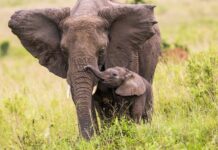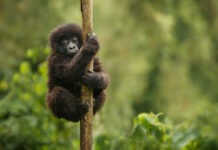It is a delicate balance those involved with conservation must maintain, taking action for the wellbeing to guard species against extinction.
Making good decisions considerate of urgency and direction are essential to species survival and having access to accurate and detailed knowledge acquired through efficient monitoring methods is the best way to achieve this.
WWF like Panthera have embraced technology to the advantage of animals, leveraging advances in science to gather information for developing successful conservation strategies. The latest triumph for WWF translocating a wounded tiger in Nepal.
Namobuddha became Nepal’s first wild tiger to be fitted with a GPS-enabled satellite collar and translocated from Chitwan National Park to Bardia National Park in Nepal on January 22. WWF supported the translocation with technical expertise and financial aid, working closely with the Government of Nepal and the National Trust for Nature Conservation. The satellite collar will help scientists gain a better understanding of tiger ecology and improve conservation efforts like anti-poaching operations.
Scientists estimate as little as 3,200 tigers remain in the wild – a dangerously low number which makes knowing the whereabouts of each and every one of those tigers paramount to their preservation.
The difficulties overcome included cost as translocating a tiger is not cheap, tranquillising equipment, data transmission and air time currently amounts to about $16,000 apiece. And the premiss for theft is high with tigers an exotic commodity especially throughout Asia where parts are still being sold under the guise of medicine.
Despite this on January 21, Namobuddha was tranquilized, collared and then was transported nearly 400 miles in a specially constructed trailer under strict supervision and security measures. The translocation was monitored by a team of wildlife veterinarians, wildlife biologists, park staff and conservationists, including Minister of Forest and Soil Conservation of Nepal, Deepak Bohara.
Namobuddha’s new home, the fertile Babai valley, is abundant with prey, has strong anti-poaching efforts in place and connects to forest corridors and other protected areas in the Terai Arc Landscape, which provides tigers room to roam. It is not easily accessible by people, which also reduces the likelihood of human-tiger conflict.
“This successful translocation is a testament to the skill and expertise of Nepal’s conservation community,” said Carter Roberts, President and CEO of WWF, who participated in the operation. “To see this majestic beast released into his new home gives me hope that tigers—in Nepal and throughout Asia–can have a bright future.”
“This translocation—the first of its kind in Nepal—is a concrete example of our commitment to saving wild tigers using the best science available, including the application of cutting-edge technologies,” said Minister Bohara. “I am confident that by working together the global community can reach the goals we set for ourselves at the recently concluded tiger summit to save tigers to benefit people, nations and nature.”
Learn more about tigers
View a slideshow of the translocation
Learn about Panthera’s Tiger Corridor Initiative
Source: WWF / Fast Company

















